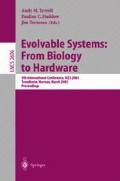Abstract
This paper discusses some aspects regarding the use of universal linear threshold elements implemented in a standard double-poly CMOS technology, which might be used for neural networks as well as plain, or mixed-signal, analog and digital circuits. The 2-transistor elements can have their threshold adjusted in real time, and thus the basic Boolean function, by changing the voltage on one or more of the inputs. The proposed elements allow for significant reduction in transistor count and number of interconnections. This in combination with a power supply voltage in the range of less than 100 mV up to typically 1.0 V allow for Power-Delay-product improvements typically in the range of hundreds to thousands of times compared to standard implementations in a 0.6 micron CMOS technology. This makes the circuits more similar to biological neurons than most existing CMOS implementations. Circuit examples are explored by theory, SPICE simulations and chip measurements. A way of exploiting inherit fault tolerance is briefly mentioned. Potential improvements on operational speed and chip area of linear threshold elements used for perceptual tasks are shown.
Access this chapter
Tax calculation will be finalised at checkout
Purchases are for personal use only
Preview
Unable to display preview. Download preview PDF.
References
P. Hasler, T. S. Lande Overview of Floating-Gate Devices, Circuits and Systems, IEEE Transactions on Circuits and Systems II: Analog and Digital Signal Processing, January 2001.
S. Aunet, Y. Berg, T. Sæther A New 2-MOSFET Universal Floating-Gate Element for Reconfigurable Digital LogicProceedings of the 19th IEEE Norchip Conference, Kista, Sweden, 12–13 November 2001, pp. 240–245.
T. Shibata, T. Ohmi An Intelligent MOS Transistor Featuring Gate-Level Weighted Sum and Threshold Operations, Technical Digest, International Electron Devices Meeting, 1991.
T. S. Lande, D. T. Wisland, T. Sæther, Y. Berg FLOGIC—Floating-Gate Logic for Low-Power Operation Proceedings of the 3rd IEEE International Conference on Electronics, Circuits and Systems, 1996, pp 1041–1044.
Y. Berg, T. S. Lande, S. Næss Low-Voltage Floating-Gate Current Mirrors Proceedings of the the Tenth Annual IEEE International ASIC Conference and Exhibit (ASIC), Portland, OR, USA, 7–10 Sept. 1997, pp 21–24.
Y. Berg, D. T. Wisland, T. S. Lande Ultra Low-Voltage/Low-Power Digital Floating-Gate Circuits IEEE Transactions on Circuits and Systems II, analog and digital signal processing, Vol. 46, Issue 7, pp. 930–936, July 1999.
S. Aunet Real-time reconfigurable devices implemented in UV-light programmable floating-gate CMOS Dissertation for the degree of doktor ingeniør, Norwegian University of Science and Technology, ISBN 82-471-5447-1, 2002.
Austria Mikro Systeme International AG 0.6 um CMOS CUP Process Parameters Document no. 9933011, Rev. B, Oct. 1998.
Y. Berg, D. T. Wisland, T. S. Lande Ultra Low-Voltage/Low-Power Digital Floating-Gate Circuits IEEE Transactions on Circuits and Systems II, analog and digital signal processing, Vol. 46, Issue 7, pp. 930–936, July 1999.
J. Rabaey, M. Pedram, P. Landman Low Power Design Methodologiesin J. Rabaey, M. Pedram (editors), Low Power Design Methodologies, Kluwer Academic Publishers, 1997.
S. Aunet, Y. Berg, O. Tjore, Ø. Næss, T. Sæther Four-MOSFET Floating-Gate UV-Programmable Elements for Multifunction Binary Logic Proceedings of the 5th World Multiconference on Systemics, Cybernetics and Informatics, Orlando, FL, USA, Volume 3,2001, pp 141–144.
P. P. Gelsinger Microprocessors for the New Millennium: Challenges, Opportunities, and New Frontiers Digest of technical papers, IEEE International Solid-State Circuits Conference, 2001, pp. 22–25.
G. Gilder, B. Swanson Seattle Sunburst Gilder Technology Report, 2002.
K. R. Laker, W. M. C. Sansen Design of analog integrated circuits and systems McGraw-Hill International Editions, ISBN 0-07-113458-1, 1994.
R. Bahr A Design of Linear Four Quadrant Analog Multipliers Using Floating-Gate Transistors thesis for the cand. scient. degree, University of Oslo, Faculty of Mathematics and Natural Sciences, Department of informatics, May 2001.
K. Y. Siu, J. Bruck Neural Computation of Arithmetic Functions Proceedings of the IEEE, No. 10, pp. 1669–1675, October 1990.
V. Bohossian Neural Logic: Theory and Implementation Dissertation for the Ph.D. degree, California Institute of Technology, 1998.
D. Hammerstrom Computational Neurobiology Meets Semiconductor Engineering Proceedings of the 30th IEEE International Symposium on Multiple-Valued Logic, 2000, pp. 3–12.
K. Y. Siu, J. Bruck, T. Kailath, T. Hofmeister Depth Efficient Neural Networks for Division and Related Problems IEEE Transactions on information theory, Vol. 39, No. 3, pp. 946–956, May 1993.
T. Shibata Intelligent VLSI Systems Based on a Psychological Brain Model Proceedings of the 2000 IEEE International Symposium on Intelligent Signal Processing and Systems, pp 323–332, Hawaii, U.S.A., November 5–8, 2000.
Author information
Authors and Affiliations
Editor information
Editors and Affiliations
Rights and permissions
Copyright information
© 2003 Springer-Verlag Berlin Heidelberg
About this paper
Cite this paper
Aunet, S., Hartmann, M. (2003). Real-Time Reconfigurable Linear Threshold Elements and Some Applications to Neural Hardware. In: Tyrrell, A.M., Haddow, P.C., Torresen, J. (eds) Evolvable Systems: From Biology to Hardware. ICES 2003. Lecture Notes in Computer Science, vol 2606. Springer, Berlin, Heidelberg. https://doi.org/10.1007/3-540-36553-2_33
Download citation
DOI: https://doi.org/10.1007/3-540-36553-2_33
Published:
Publisher Name: Springer, Berlin, Heidelberg
Print ISBN: 978-3-540-00730-2
Online ISBN: 978-3-540-36553-2
eBook Packages: Springer Book Archive

